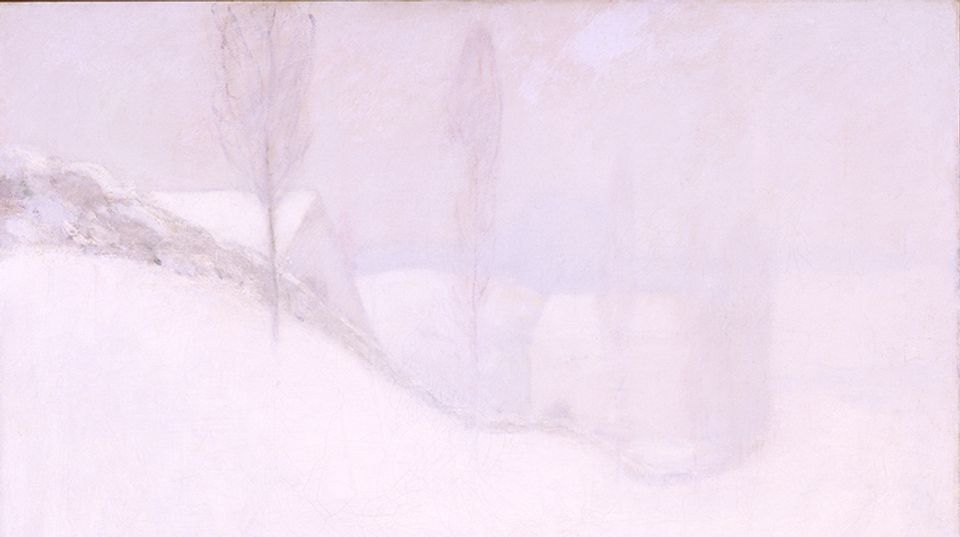Easily one of the iconic visual artworks from the last few decades—and all the more so for having been seen by so few people—Robert Smithson's Spiral Jetty (1970) has possibly never looked better. Underwater for years, the land art sculpture reemerged in 2002 after the Great Salt Lake's waters subsided slightly. (Recently, the waters sunk so low that the piece was briefly landlocked.) Consider this stunning photograph of the Jetty (taken by photoblogger Chas Bowie) and you'll understand why art fans—including more than a few art bloggers—are making pilgrimages in record numbers to see the earthwork. (The surge in "attendance" has no doubt been buoyed by the Smithson retrospective, which debuted last year at MOCA in LA and is currently on display at the Whitney; discussion of Smithson's legacy by Arthur Danto and Peter Schjeldahl, to name just two; and the realization of Floating Island To Travel Around Manhatten Island, a project that has before now existed only as a sensibly named sketch. Not a bad year for Smithson.)
The Jetty is such a remarkable work because it intersects so many conversations in the art world (which is all the more extraordinary given its remote location). Tyler Green wrote the following perceptive comments after his visit:
The Jetty is one of the masterpieces of American art. It explodes the 19th-century landscape painting of Frederic Church and his contemporaries, exposing it as the art equivalent of transitional technology. Here Smithson doesn't merely borrow land as a subject, he uses it as the canvas for his art.
That's a great connection and introduces the third party: the gorgeous, unrelenting western landscape. I would quibble with Green over some points—that Church and friends didn't explode the landscapes themselves, in particular. Nevertheless, Smithson picked exactly the right site for an environment that would affect his work in a major way. Throughout his life the artist studied the scientific concept of entropy enthusiastically, and he rejected prevailing notions about pure form; his understanding of energy and chaos are at hand in the piece. The Jetty is a nearly 7,000-ton, 1,500-foot basalt installation—and every once in a while the Lake nonchalantly tucks it out of sight, only to leisurely return the rocks to view after sheathing them with fine salt crystals.

Albert Bierstadt, Among the Sierra Nevada, California, 1868, Smithsonian American Art Museum, 1977.107.1
What about Church and his Hudson River School contemporaries? Their paintings sought to place the exotic, untamed New World into the context of their day. Church's Aurora Borealis situates man in a position to marvel at the awesome natural spectacle, as if man were its intended audience. That sense of theater—the divine revelation to man through nature at the compositional and narrative center of the canvas—is key to Albert Bierstadt's sublime western landscapes, which belied the harsh reality of crossing unforgiving mountains and surviving on hostile frontier plains.
For American artists, the natural frontier serves as a crucible against which art is made, whether 100 years ago or today. Bierstadt and Church collapsed that natural element into their landscapes, hoping to draw out providence from the uncategorizable. Smithson introduced that same element to the Jetty in order to make a large manmade object a happenstance player in an ongoing natural drama.

















